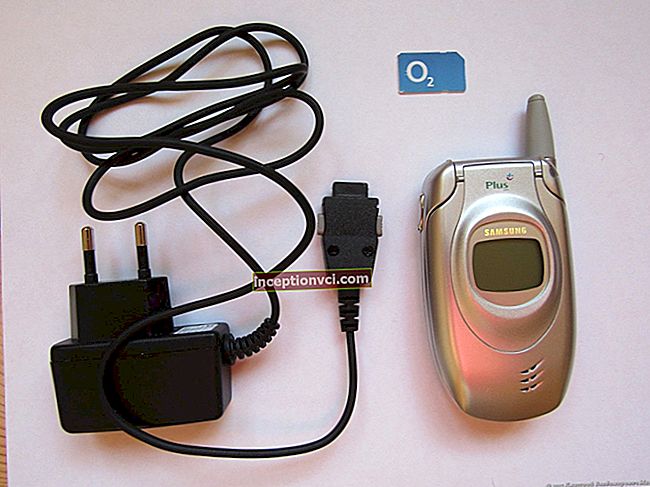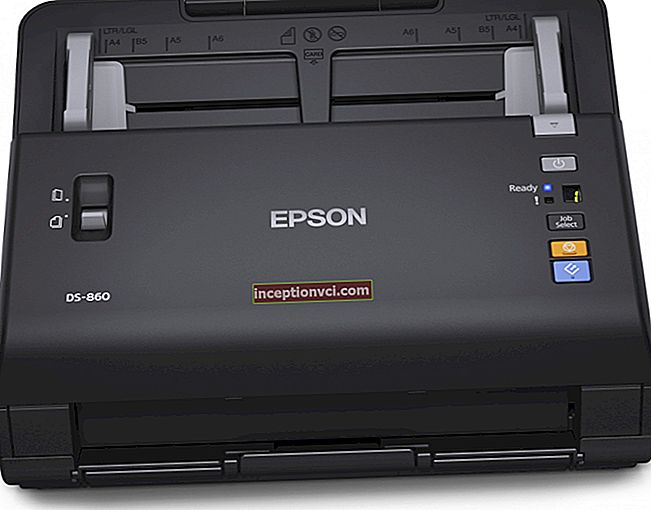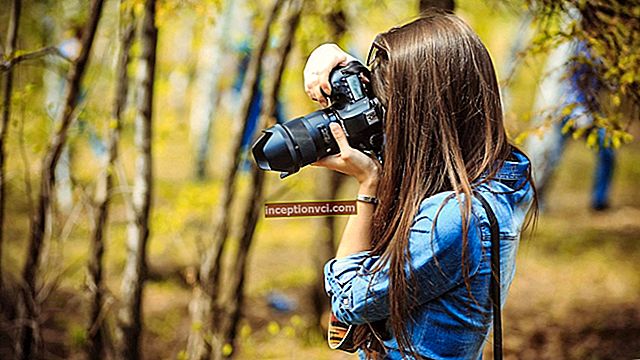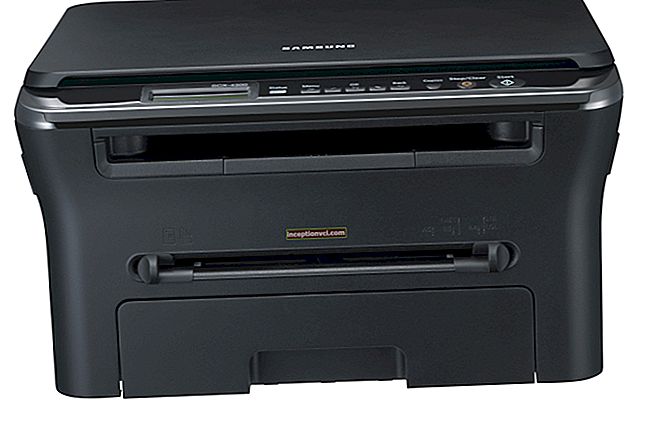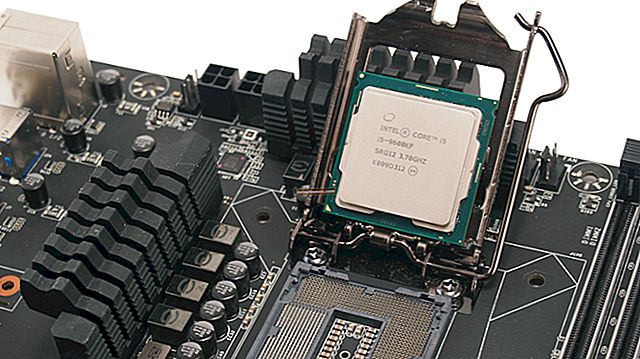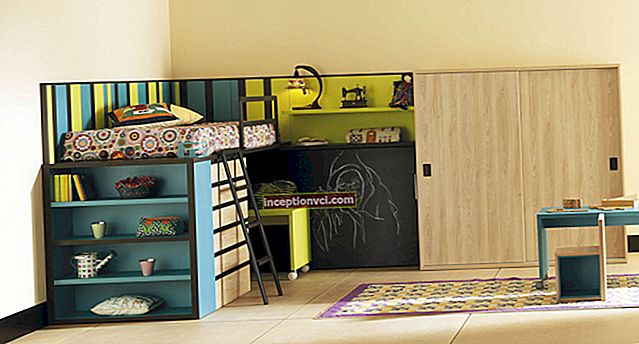Overview Canon EOS 5D
You can't keep up with Canon. The company again and again tests the digital mirror market for strength, opening new niches and segments with its own hands. Quite a long time ago, the Japanese released the relatively popular and to this day EOS 300D - one of the best-selling cameras in history, catching up with the legendary AE-1. It's storming again: The 12.8-megapixel EOS 5D has a sensor the size of a 35mm film frame and costs half the price of Canon's 16.7-megapixel flagship 1DS Mark II.



Finally, a professional digital SLR has appeared at a relatively affordable price, which is in no way inferior to a film one. Saying this, we primarily mean the absence of such a distinctive feature of all SLR models with a sensor of the APS-C format, as the "crop factor", or the factor of increasing the focal length. Recall that having smaller than a 35-mm frame, the camera matrix "narrows" the angle of the lens field of view by 1.5 times (Nikon DSLRs) or 1.6 times (Canon DSLRs). That is, to get the field of view that the popular 28mm wide angle provides, you need to purchase a super wide angle lens with a 17mm short end focal length. In addition, a camera with a full-frame sensor should have a brighter viewfinder. Those who have worked only with devices with a trimmed sensor will instantly feel the difference - a slightly shallower depth of field for the same aperture and focal length (beneficial for portrait photography, when it is necessary to get a beautiful background blur - bokeh) and, of course, larger pixels, providing digital noise. By the way, the size of one pixel in the 5D is even larger than that of the 1Ds Mark II, and is 8.2x8.2 nanometers. These are the main advantages of the 35mm format sensor.
However, the full-frame camera also has a reverse side of the coin, which is not immediately striking. What is it about? It would seem that you can finally take any wide-angle lens, put it on 5D and enjoy the wide angle of the field of view, experiment with surreal perspectives, include foreground details in the frame, etc. However, this will have to be done very carefully, because now all the weaknesses of the lenses, which were previously left behind the frame by the APS-C sensor, will appear for your review. Keep in mind that with wide-angle lenses, image quality deteriorates closer to the edges of the frame. Even the most expensive Canon L-series lenses at the extreme short-throw end are not free from vignetting, perspective "blockage" of vertical lines of objects (geometric distortion), various kinds of chromatic aberrations and, unfortunately, a decrease in the level of sharpness. Well, good optics are vital for expensive cameras, and this will have to be taken into account when budgeting money to buy a 5D. Further, not all photographers need an ultra-wide angle in their work, and many, on the contrary, enthusiastically welcomed the 1.6 times the focal length of their telephoto lenses. In fact, DSLRs with a stripped-down sensor are a godsend for professionals filming sports, wildlife and other objects that cannot be approached. On top of everything from buying such a full-frame camera, it can hold onto an arsenal of EF-S mount lenses specifically designed for use with APS-C format cameras. Here is a set of probable pros and cons of the new digital SLR we have formed a priori.
Anyway, the 5D itself is the first full-frame model of its kind, designed to sit between the advanced 20D and Canon's hi-end 1D and 1Ds cameras. Innovative technological developments of the company have made it possible to obtain a relatively cheap 35 mm CMOS sensor in production.
Let's try to dot the i's in the test review of another professional camera.So, here it is, the 5D model, in our hands. The external resemblance to the 20D is very strong, except that the first is somewhat more massive. Familiar Canon layout of controls, including the instantly recognizable selector dial and WB bracketing and AF point selection joystick with eight working directions. The 5D's body is constructed from magnesium alloy and is sheathed with rubberized grips like the 20D. Apart from the price, this camera differs from the older sisters of the 1D and 1Ds series by the absence of insulation at the joints of the individual parts of the body, which prevents water and dust from entering the cracks. The creators have generously equipped the 5D with a large 2.5-inch LCD display. The viewing angle is 170 degrees - an excellent indicator, but there is no special anti-reflective coating.
Coming back to the comparison with the 20D, one of the most important advantages of a full-frame camera is the large and bright viewfinder. It makes objects appear much clearer, providing great framing convenience. The viewfinder pentaprism has taken the place of the built-in flash - the 5D lacks it. The viewfinder screen features a pattern of nine AF points and a central spot metering circle that reads data from a 3.5% area of the frame (by the way, this feature was not available on the 20D). Additional invisible six points are located within the circle to provide more accurate metering data in AI-Servo continuous focusing mode. We tested the camera with the new L-series EF 24-105mm f / 4 IS lens. Autofocus speed and accuracy are amazing. There is no shutter lag. There is a solid vibration damping mechanism associated with raising and lowering the mirror, and the resulting dimming of the viewfinder focusing screen is barely perceptible. The following functional distinctive feature of this model deserves special mention: among the menu options you will find the Picture Styles setting - a selection of six color settings optimized for shooting landscapes, portraits, b / w photos (in addition to these three modes, there are also standard, faithful settings - “ accurate color rendering ”, and neutral). Each setting has its own level of saturation, sharpness and contrast, which is suitable for the specified tasks and situations. For example, in Portrait mode, we get rich shades of red - a prerequisite for the reproduction of lively skin tones, as well as soft texture of objects. Even more saturation, this time of greens and blues, is guaranteed by the Landscape setting. The names of the rest of the settings speak for themselves. Basically, you can think of them as six different types of digital film.
The EOS 5D is not a reporter camera. The EOS 5D has a continuous shooting speed of only 3 fps (the 20D has 5 fps). But considering that the 5D processor has to "roll over" impressive amounts of information (one JPEG "weighs" 4.6 MB, and RAW - 13 MB), this is a pretty good indicator. The main thing is that the camera's buffering system is perfectly adjusted, and one cannot complain about the speed of data writing to the memory card. We took a Lexar Professional 80-speed CompactFlash and burned 10 best-resolution JPEGs and 10 RAW files to it in turn. The following results were obtained: in the first case - 6 seconds, in the second - 16.5. Quite normal indicators. In fact, by recording pictures on a high-speed card, you can shoot without stopping. While we continuously pressed the shutter button, the 5D recorded 75 JPEGs and 18 RAWs at approximately the above speeds, and only then slowed down a bit.
But does the quality of the picture somehow depend on the speed of the camera? As applied to digital cameras, it depends on their internal filling - a sensor, an information processor and algorithms for its implementation. If, in the case of DSLRs with APS-C sensors, talk about good optics was often not as relevant as many would like (as we have already said, some of the shortcomings literally remained behind the scenes), now the moment of truth has come: the 5D sensor will show the slightest optical weakness of the lenses. Therefore, when analyzing the quality of images obtained with this camera, one cannot but make a footnote - “taking into account the lens used”.
But first of all, we will be interested in the main quality characteristics of the images, which completely depend on the performance of the CMOS matrix and some of the in-camera technological nuances. The first is “noisy” at high ISO sensitivities. However, Canon digital SLR CMOS sensors have always produced images that can be called the benchmark for low noise. The combination of CMOS sensor and Digic II image processor once again leaves no chance for digital noise. More or less discernible noise appears only at ISO 800. At ISO 1600 and 3200, a slightly aggressive noise reduction algorithm is activated, leading to some softening of the picture. This is perhaps the only difference between the 5D and the 1Ds Mark II, which exhibits a bit more noise at the ISO data, but retains fine details. The camera achieves the highest resolution limits (see table in the quantitative analysis of quality section). Although a barely noticeable moiré mesh appears on their border. The large pixels of the 5D sensor are capable of generating a powerful charge, thereby reducing the resolution requirements of lenses when compared to APS-C sensors. Even in JPEG format, the resulting images were crisp and detailed. We converted raw RAW images using the Adobe Camera RAW plug-in, and at the same time noticed the following feature: software exposure compensation within -1.5 EV helps to restore a significant amount of lost details in highlights (due to overexposure of certain areas). The efficiently reproducible dynamic range of the image captured at ISO 100 was 8-9 stops. The white balance system is definitely more advanced than the 20D. However, in automatic mode, it still completely fails to cope with the warm, slightly brownish tint of incandescent light, which dominates in pictures taken indoors. The 5D features a dark frame noise reduction mode optimized for shooting in the dark with slow shutter speeds (over 1 sec). In short, the principle of its operation is as follows: after the first normal exposure, the camera shoots another frame at exactly the same shutter speed, but with the shutter closed. The resulting pixel configuration is compared with the original image, on the basis of which the system calculates all "hot" pixels and the so-called fixed distribution noise. This algorithm works quite efficiently, there is no visible loss of detail.
At the beginning of the review, we already predicted how the full-format camera sensor will reveal the weaknesses of the lenses. And our assumptions were confirmed in practice. When shooting in the extreme wide-angle position, vignetting was noticeable at the edges of the frame, especially if uniform light shades (for example, blues of the sky) dominated there. Chromatic aberrations slipped in the form of a purple stripe along the boundaries of contrasting objects - a purple halo. In principle, these problems are resolved by shooting in RAW format with subsequent software adjustments to the appropriate settings. In addition, with decreasing aperture and increasing focal length, defects disappeared by themselves. The situation with the drop in resolution at the edges is a little more serious. However, this may not always be noticeable and only on prints of a fairly large format. However, there is no escaping the main conclusion: the 5D is very finicky about lenses and will amaze you with absolutely impeccable picture quality if you agree to purchase a top-notch Canon lens for it.
As expected, the 5D has appeared in its most favorable light. The main complaints, as is the case with most Canon DSLRs, relate to functions and technical features that were not implemented in this model. For example, an RGB histogram in addition to a black and white histogram. On the other hand, there must be some advantages to justify the higher price of professional 1Ds.The 5D has a maximum flash sync speed of only 1/200 sec, while when shooting in a studio it can even drop to 1/125 sec. The PictBridge direct print key is located on the camera body alongside other controls. However, it is unlikely that the potential audience of photographers who will work with 5D will need it. Why then take up space at all? Wouldn't it have been better to place a programmable custom function key on the case instead? True, such an option is available on the mode dial, from which for some reason the automatic adjustment of the depth of field A-DEP has disappeared. Remarks of this kind may seem insignificant against the background of general qualitative results, and yet there are such minor inconsistencies.
Strategically speaking, it is worth noting that the 5D heralded the long-awaited advent of the full-frame digital camera, which has unambiguously propelled this exclusive professional photographic standard to the mainstream. On the other hand, cameras with APS-C format sensors today occupy a stable position in the market: their affordability, high image quality, a large selection of optics specially designed for such models are captivating (EF-S series for Canon, DC for Sigma, DX for Nikon and etc.). It is difficult to say in which direction the production of matrices will develop in the future. Canon released its 5D one and a half to two years ago - before the APS-C standard gained a stable position, the chances of full-format digital photography would have become mainstream. However, given the crazy dynamics of the pace of development of modern technologies, of course, sooner or later 35-mm sensors will become commonplace. As for the “professional suitability” of the 5D, everything is at the highest level: once again Canon is the first on the market to create the standard of technical excellence.
Canon EOS 5D test results
So, can the excellent comparative performance be applied to shots captured in full format 5D? Without any doubt. For example, the levels of digital noise were not more critical than those demonstrated by the previously released Canon 1D Mark II N. Even the queen of professional DSLRs, Canon 1Ds Mark II, was more “noisy” at maximum ISO. True, not to the detriment of general detail. Naturally, the 5D loses to the latter in resolution - the difference of 4 megapixels affects. With L-series lenses, the pictures were super sharp, but in general the camera reacts too "painfully" to the quality of the optics: non-professional lenses actually level the resolution potential of the sensor, which, in turn, transmits all their shortcomings.
Unexpected was the somewhat "incorrect" behavior of the camera with respect to some colors, in particular red - too saturated even when using the standard color setting of the Adobe RGB mode. These results look very strange, given the absence of the above-mentioned deviation in previous models of DSLRs equipped with the same Digic II processor. In spite of everything, the quality characteristics of the images are in the top league.
Digital noise
Let's say right away that the level of digital noise in the test images turned out to be one of the lowest that we have ever encountered. Noise at ISO 50, 100, 200 and 400 is out of the question. Even at ISO 1600, the shots were perfectly suited for large format prints. When it comes to maximum ISO 3200, with a luminance deviation of 1.36%, the EOS 5D outperforms the EOS 1D Mark II N, which has a smaller sensor but the same pixel size. As we already noted, at ISO 1600 and 3200 there is a decrease in clarity (slight loss of detail).
Resolution / Sharpness
The main indicator in this test is the MTF value (modulation transfer function). Let us briefly recall how it is obtained. The world is photographed with alternating black and white lines. As the frequency of their repetition increases, the contrast will decrease.The dependence of the reference contrast (100%) on the repetition rate of black and white lines in cycles per pixel (adjacent lines make up a cycle) is the modulation transfer function. An important value is the frequency with MTF = 0.5 (50%): the higher it is, the sharper the image. We made our calculations based on a test target shot with the new EF 24-105mm f / 4 lens. Aperture - f / 8, color setting - standard (standard), implying an increase in sharpness by three points. The rest of the parameters are neutral. The image without moiré resolution reached 1680 lines high at the edges, and 1707 in the center. It is quite impressive.
Key points
Viewfinder
A significant advantage of a camera with a full-frame matrix is a large and bright viewfinder. Former owners of the 20D will appreciate the benefits of framing. The viewfinder's field of view is identical to that provided by professional 1D / 1Ds series DSLRs. It displays a large spot metering circle along with nine AF points. At the bottom of the viewfinder, there is a line with all the necessary parameters for the current settings (except for the ISO value and white balance mode). To prevent light rays from entering the viewfinder when shooting at long exposures, the rubber eyecup is removed, and a special cap is put on in its place.
Memory card slot
The memory card slot is located in the grip. It opens as follows - push the door towards you and throw it aside. Familiar Canon construct. The camera is compatible with CompactFlash I / II cards and uses the FAT32 file system to handle cards larger than 2 GB. It would be nice to have an additional slot, for example, for SD memory cards, used on professional models for safety reasons. And it would not hurt that when opening the slot, before all the images are overwritten from the buffer to the memory card, the camera issues a warning.
Batteries
Everything is the same here - the same 1390 mAh lithium-ion battery as in the predecessor 20D. It is located in the handle, and the door of its compartment is removed if the battery pack is attached. According to official statistics from Canon, one full charge should be enough for 800 shots under ideal conditions (temperature 20 ° C, etc.) At zero temperature, the battery life is cut in half. Also keep in mind that the focusing mechanisms of different lenses consume different amounts of energy. Charging time for the battery is approximately 1 hour 40 minutes.
Interface connections
Connecting arteries of the camera - ports and connectors - are built into the left side part of the body. The first compartment contains a connector for synchronizing an external flash and a jack for connecting a remote control, in the second - a USB terminal and a video output. Both compartments are covered with not very reliable rubber grommets. The data transfer rate via the USB port is approximately 2.5 Mb / s. Be sure to purchase a remote control. The sharpness of images taken with macro photography and slow shutter speeds will be significantly improved.
Sensor
The size of the CMOS-matrix of the camera corresponds to the area of a 35-mm frame. Thus, the annoying crop factor that increases the focal length of lenses on amateur DSLR cameras is absent in this case. The size of one pixel of the sensor is 8.2x8.2 nm. (Another camera with a Canon 1Ds Mark II full-frame sensor has 7.2x7.2nm.) Recall that large pixels theoretically (and in the overwhelming majority of cases and practically) guarantee a low level of digital noise. The full-format matrix makes its own adjustments to the depth of field of the lens - it reduces it. It also reveals the weak points of lenses hidden outside the frame of the APS-C sensor.
LCD display
This is Canon's second professional-grade DSLR (after the 1D Mark II N) with a large 2.5-inch LCD. The same 1Ds Mark II is equipped with a 2-inch display.Despite the lack of anti-reflective coating, the picture is clearly visible even in bright sunlight. It seems that displays of this size have recently become the industry standard as more manufacturers use them on their cameras.
Image format
The icon of the menu section in the form of a red camera indicates the image quality settings. Like all cameras in its class, the 5D is capable of shooting in RAW format while simultaneously saving the image in standard JPEG format. In this case, the maximum size of the stored "satellite" image can be 4368 pixels on the larger side. It is not hard to guess that the total size of the recorded file will be huge. On average, it will take 15.5-16 MB.
Image options
In the same section of the menu there is an option to install Picture styles. It includes six preset settings for the color model of the image, including parameters such as sharpness, saturation, contrast and hue. For each model, certain values of the above parameters are assigned, although they can be adjusted at your own discretion. This is the first time this scheme has been implemented on Canon cameras (besides 5D, the 1D Mark II N also has the Picture styles option), and it seems to be a pretty good solution.
White balance
5D white balance settings are full of variety and should cope with any kind of lighting. But if they are not enough, you will also have a virtual histogram (legacy 20D) at your disposal, which allows you to adjust the b / w by moving the pointers along the color axes: blue / amber and crimson / green. At first, it resembles a primitive computer game, but over time, when your hand is trained, you will truly appreciate the graphicality and clarity of this approach.
Custom settings
There are 21 custom settings. These are accessed through the camera menu. Here, the long exposure noise reduction mode is activated, the ISO sensitivity extension is set (additional ISO sensitivity values are 50 and 3200), and the mirror is locked when raised. An important feature is the first and second curtain flash synchronization. By shooting at slow shutter speeds and setting the flash sync mode to second curtain, you will make it fire at the end of the exposure interval, achieving more natural lighting, such as moving objects.
Playback
On the large display, the captured images look great, quite clear and bright. You can set the normal mode of viewing pictures, with information on the main exposure parameters or not. "Scrolling" pictures is carried out using the control wheel, one picture instantly replaces another. In playback mode, the Info key displays a histogram of image brightness, and overexposed areas start blinking in black.
Verdict
It has come to pass. An affordable full-size sensor knocked on our door in the guise of an EOS 5D. Let's say that it is not yet so affordable to recognize a full-size digital photo as a mass one (at least by domestic standards of living standards). However, for most mid-level professionals, 5D is likely to automatically become a tool that takes their work to the next level and recreates the best aspects of film photography to some extent.
Functionality
The camera is well grounded; there are all conceivable installations that no professional can do without. But nothing more.
Construction quality
The case is made of heavy-duty magnesium alloy for a solid look. The camera differs from the models of the 1D / 1Ds series by the absence of all-weather sealed piercings.
Ease of use
Canon pure water. Naturally, in a good way. The organization of the menu system is thought out to the smallest detail, the layout of the external controls has an intuitive and painfully familiar layout.
Image quality
Reference (for more details, see the corresponding section).The only more or less significant “but” is probable problems of a purely objective nature: a full-format sensor “is on friendly terms” only with high-quality optics.
Price-quality ratio
A full-fledged price revolution is coming. For most, the 1Ds Mark II remains an elusive dream. Against its background, the 5D results, which are not much inferior in quality, are the embodiment of reality.
Specifications (edit)
Sensor - CMOS sensor (CMOS) 35.8x23.9 mm
Shared Pixels - 13.3 million
Effective pixels - 12.8 million
Maximum image size - 4368x2912
ISO sensitivity - 100-1600 in 1/3 EV steps, 50-3200 in Boost mode
Data storage format - RAW, JPEG
Color spaces - sRGB, AdobeRGB
Bayonet mount - Canon-EF
Autofocus - 9-point (plus 6 invisible points in the area of the central spot metering circle)
Autofocus range - from 0.5 to 18 EV (at a normal temperature of 20 ° C and ISO 100)
Autofocus illuminator - only via external Speedlights
Autofocus Modes - single-frame, tracking (AI Servo), autofocus with automatic switching from single-frame mode to tracking (AI Focus)
Exposure metering - 35 zone TTL encoder
Metering range - EV 1-20 (based on normal temperature 20 ° C, ISO 100 and used Canon 50mm f / 1.4 lens)
Metering Modes - evaluative (associated with any AF point); partial (8% of the area of the field of the frame); center-weighted; Spot (3.5% of the center area of the viewfinder area)
Exposure modes - Auto, Program (Program Shift), Shutter / Aperture Priority, Manual, Custom
Exposure compensation - +/- 2 EV in steps of 1/3 EV and 1/2 EV
Auto Exposure Bracketing - in the range of +/- 2 EV in steps of 1/3 EV and 1/2 EV
Excerpt - 30-1 / 8000 sec, Bulb mode
Flash sync at shutter speed - 1/200 sec
Self-timer - 10 sec
White balance - auto, daylight, shade, cloudy, incandescent, white fluorescent, flash, custom setting, indication of color temperature in K, manual gradation (blue / yellow and magenta / green within +/- 9)
Flash connectors - hot shoe platform, external flash sync connector
Flash output compensation - +/- 2 EV in 1/3 EV steps via Speedlights
Flash sync modes - on the first and second curtains
Viewfinder - pentaprism with built-in diopter adjustment in the range from -3 to +1 m
Viewfinder field of view - approximately 96%
Image settings - 6 preset Picture Styles color settings, monochrome image mode with filters and toning effects, 3 settings for custom settings for sharpness, contrast, saturation and hue
Memory cards - CompactFlash type I / II
LCD display - color polysilicone, 2.5-inch, resolution 230,000 pixels
Video output - NTSC / PAL
Interface - USB 2.0
Remote control - additional cable
Batteries - lithium-ion battery BP-511A, separate CR2016 battery for control of date, time, etc.
Dimensions (edit) - 152x113x75 mm
Weight (without battery) - 810 g


